I have a love-hate relationship with RootsTech. I love the energy and excitement which RootsTech generates for family history work. But you can’t really talk about family history work without telling stories about ancestors who did this wonderful thing or left that inspiring heritage. And hearing those stories makes me bawl like a baby every time. Yeah, that’s right. Every time. Stories connect us to our ancestors and help us discover who we are. Truly our hearts turn towards our fathers when we discover, gather, and share stories of our ancestors with the generations after us. That turning of the children’s hearts aligns very well with our innate yearning for our heavenly home. And that provides for a contribution we need to make. What will you leave? 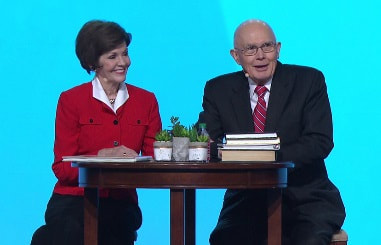 When I learned that Family Discovery Day at RootsTech 2018 would feature President Oakes, I could hardly contain my excitement. Here we have the General Authority who’s perhaps more closely identified with LDS singles life and issues than any other General Authority. Of course the presentation was outstanding. President and Sister Oakes told stories, and I broke yet another water main. But they also touched on a theme similar to Elder Uctdorf. The Oakeses emphasized the need not just to provide ordinances for our ancestors but also to retell the stories about those ancestors continuously for the benefit of future generations. And they brought examples. President Oakes showed copies of journals from some of his ancestors and told how sharing those journals have benefitted his descendants. Sister Oakes described how the journals of her ancestors gave her a wonderful religious education. The testimonies they bore of the restored gospel taught her much. It made me wonder, “What stories am I leaving for the generations that come after me?” You don’t need to be married to leave a strong testimony or inspire a wonderful heritage of faith and courage. But future generations will never know it unless someone records it. Who will you follow? 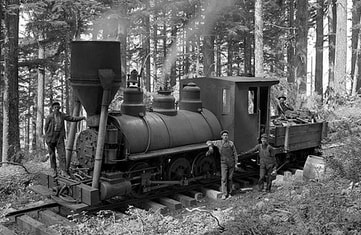 Hearing the stories of our ancestors stirs a longing inside of us. We yearn to be united with those we love who have passed on before us. Yet the same Spirit which prompts us to turn our hearts towards our fathers also invites us to follow the Savior and return to our heavenly home. Elder Uchtdorf spoke of how God knows each one of us intimately — “your every thought, your sorrows, and your greatest hopes.” He also declared that following the Lord on the path back to our heavenly home will make our lives better. Said he,
Is there any better way to follow the Savior than participating in family history and temple work? Surely the fruits of the Spirit will be ours when we contribute to this wonderful work. And LDS singles can make very meaningful contributions. What will you contribute?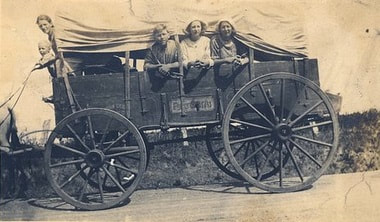 Those who embrace this cause on their journey home will reach a wonderful realization. Elder Uchtdorf declared this life isn’t about just you or me but all of us. We all feel the yearning to come home, and that puts all of us on the same journey back to that heavenly home. President and Sister Oakes shared similar principles in their RootsTech presentation. We must be linked together with our ancestors because we cannot be saved without them, nor can they be saved without us. If such grandiose visions make you question what role you could possibly have in such a cause, consider Elder Uchtdorf’s remarks when he offered these thoughts:
Family history and temple work isn’t just for old people. And I don’t care how much pioneer ancestry you have; there’s work for you to do! We singles can make mighty, meaningful contributions to advancing this work. We can discover, gather, and share the stories of our ancestors in ways that will inspire those who come after us — whether or not they are our literal descendants. As Elder Uchtdorf testified,
Let us each move forward and embrace our own contribution to the cause. When we do, we’ll work miracles in the lives of others. And that will bring more joy in our journey.
0 Comments
 As the new year approached, I wondered which president of the Church we’d be studying this year. Then on the last Sunday of December, my ward held a joint meeting for the third hour to explain what would follow in 2018. No longer would we study the words of modern prophets in manuals devoted to individual servants of the Lord. Now we’d study the words of prophets and apostles from recent Conference addresses. And we’d be discussing them as a group, with everyone seated in a circle facing each other. The word discussion is key. The Church would no longer provide lesson plans as it had previously. Now discussion leaders would need to prepare their own plans ahead of time considering the needs of the class. Since learning of these changes, I’ve been intensely curious to see how well they’d work. After all, this free-form format leaves a lot of blanks to fill. But observing how those blanks have been filled over the past two months, I’m totally sold on the new model. I believe it’s but a prelude of greater things to come when we embrace the moments. Embrace the freedom 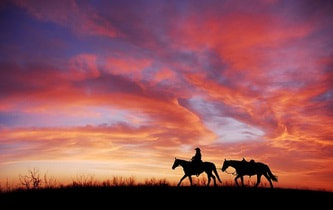 Part of my concern with the new program related to my new calling as a Sunday School teacher for the 12-year-olds. It’d been years since I last taught the youth, and the Church has made many changes to youth instruction in that time. For the past couple of years, the youth have experienced in their classes what all of us now experience in our classes and meetings. The Church still provides the skeleton pieces of what could be a lesson plan. I like this new model, especially the freedom to put the pieces together in the way I feel inspired. I also love how, even though we make our own lesson plans, we can go off script any time we feel inspired. Instructors have always had this freedom, but I’m glad the new model builds on it. Some of the best learning moments for both student and instructor occur during those unpredictable moments that simply come. Embrace the belonging  What I really like best about the new model is a newfound sense of belonging. Perhaps the biggest contributor to this sense lies in the seating arrangement. Before, chairs would commonly be arranged in rows. Often people would sit as far back as they could. Everyone has typical places to sit as well, providing a feeling of stagnation. Now, with the insistence on sitting in a circle, there’s no more seeing the backs of other people’s heads. The circle arrangement has everyone seeing everyone. And there’s no “fixed position” for anyone. That arrangement changes the whole dynamic of how I’ve come to see myself in my ward. Over the years, I’ve typically felt estranged. Lessons were typically about this marriage-and-family thing I didn’t have. And sitting so as to be less visible by others didn’t help with the sense of belonging either. That’s all changed with the new model. Lessons still focus on the marriage-and-family thing I don’t have, but there’s something about sitting in a circle where everyone can see everyone that provides this sense that we don’t need to be in the same chapter of life to be on the same journey. Embrace the opportunity  That shift in perspective helped me to see something I wasn’t seeing before. We singles need to contribute more to meetings and classes in general membership wards. Our failure to do so hurts everyone. The other week in quorum meeting, the discussion turned to descriptions of children spending countless hours watching online videos of other kids doing things, like play a video game or build a model. A flash of inspiration came to me, and because I felt more a part of the group, I decided to share it. After announcing my ignorance in dealing with kids, I suggested the fathers actually do with their kids what they’re watching other kids do in the videos. This comment completely changed the tenor of the meeting. The discussion branched into a direction it otherwise wouldn’t have. The spirit and comments that followed helped me to see that many of the brethren were edified by the new direction the discussion took after my contribution. As I said before, I’m totally sold on the new model the Church has employed for our classes and meetings this year. We singles have much to contribute therein. Instead of complaining about how we don’t fit in and tuning out, we can embrace the moments the new model offers to lift where we stand. When we make those contributions, we can bless the lives of others on the same journey we’re on. And that will bring more joy in our journey.
President Nelson begins his remarks by sharing the story of a tribal king he met in Ghana. This tribal king asked President Nelson to teach him more about Jesus Christ. President Nelson shared the Savior’s visit anciently to America by reading with the king from 3 Nephi. The king then received the copy of the Book of Mormon from which he and President Nelson had just read. Responding joyfully, the king declared the additional knowledge about Jesus Christ he’d received was more precious to him than diamonds or rubies. President Nelson then turned the king’s response into a question for us all. How valuable is the Book of Mormon to us? He then extended that question by asking three related ones:
We should all consider these questions. What would your life be like? 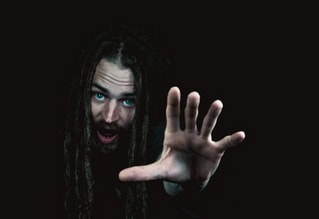 Without the Book of Mormon, I’m pretty certain my life would be very different. I’m not sure what church I would have joined or even if I would be a member of any church. Joseph Smith’s father stayed aloof from the churches of his time and place because they didn’t have the truth he sought. Perhaps I would’ve done likewise. Either way, I imagine I’d still be searching for the truth. A sincere search for truth, after all, lead me to read the Book of Mormon and seriously apply Moroni’s promise. That experience led to my testimony of not only the Book of Mormon but of everything connected with it — the Restoration of the Lord’s gospel, His Church, and the prophetic mission of Joseph Smith. Without that testimony, I never would’ve served a mission. And had I served anyway, I doubt I would have stayed in the field very long. Within a week of arriving in Guatemala I began a battle with sickness that lasted much of my mission. My testimony was a bulwark support through that adversity. What would you not know?  Without the Book of Mormon, I wouldn’t know or appreciate many simple truths restored through its pages, especially the Atonement. Where else do we find such clarity of exposition about the Savior’s ultimate sacrifice in both breadth and depth? Certainly not in the Bible. The Doctrine and Covenants and the Pearl of Great Price speak clearly about the Atonement, but not with the same breadth or depth as the Book of Mormon. Not understanding the Atonement, I’d probably be like one of my last mission companions before we met. He worried greatly his imperfections would lead others to reject the gospel and that both they and he would be damned for it. I used the Book of Mormon to help him to understand that the Atonement covers not only what we do wrong but also what we don’t do right. Without the Book of Mormon, I wouldn’t have had the understanding to help myself let alone someone else. What would you not have?  Without the Book of Mormon, I wouldn’t have anywhere near the confidence level I have today. That’s because I never would’ve served the full-time mission which gave birth to my confidence and self-assertion. As a teenager, I was the introvert of introverts. You could’ve looked in the dictionary for introvert and found my picture. How did I come out of my shell? The Lord sent me where a 30-year civil war had made much of the people introverted. Helping these people come out of their shell so I could teach them the restored gospel helped me to see I could come out of my shell as well. What opportunities would I have missed if I didn’t have the confidence to assert myself? What friends and other relationships would I never have experienced without that confidence? President Nelson’s three questions about the Book of Mormon are worthy of our consideration. How would you answer them? I’ve found my own consideration of these questions spiritually satisfying and enlightening. If you will take the time to reflect on your own answers to President Nelson’s questions, I believe you’ll find the same spiritual satisfaction and enlightenment come to you. And that will bring more joy in your journey.
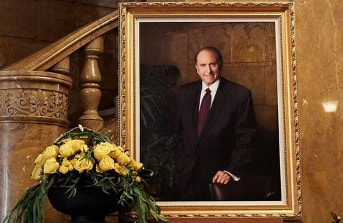 I wasn’t surprised to learn of President Thomas S. Monson’s passing. I was surprised he didn’t go sooner. He didn’t look that great when we last saw him in Conference. It amazes me he lasted as long as he did. But the Lord governs the life span of His prophets just as He governs His Church. And President Monson’s time has come. Thousands viewed his body in the Conference Center before his Church-broadcast funeral service, also held in the Conference Center. Generous and well-deserved praise reminded us who President Monson was. His body was then taken to the cemetery for a private service with family. All of this is most appropriate. Somehow, though, I find myself more reflective now than when President Hinckley died. Then I was a little disappointed to see President Hinckley go. I wanted him to stay just a little longer. Now with President Monson’s passing, I’m relieved his suffering has ended. But I find myself wondering about legacy. Those who came before 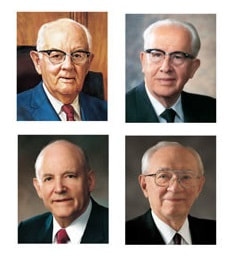 Each modern-day prophet I can remember seems to have a legacy. The earliest prophet I remember is Spencer W. Kimball. He encouraged us to“lengthen our stride” and do more today to forward the Lord’s work. Then came Ezra Taft Benson, best known for his classic discourses on the Book of Mormon and pride. Though with us briefly, Howard W. Hunter encouraged us to make our temple recommend the great seal of our Church membership. Then Gordon B. Hinckley wore the mantle, and was he ever versatile! It’s partly why I like the man so much. We saw accelerated growth in the numbers of full-time missionaries and temples. Particularly impressive to me was not only the reconstruction of the Nauvoo temple but also President Hinckley’s insistence that the dedication be shared with the entire Church. And then there’s the Conference Center and the Orchestra at Temple Square. Plus, who can forget the 60 Minutes interview with Mike Wallace? And I rejoiced when President Hinckley announced the Perpetual Education Fund. Having served my mission in Guatemala, I knew first hand how desperately needed that program was. President Hinckley tried to do more in every way he could. It was as though he was the culmination of the legacy of the prophets who came before him. The man himself 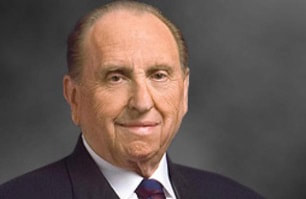 And President Monson? When I think about his legacy, what comes to mind? Honestly, when I think about President Monson, I simply see a good man. That may not seem like much, especially by comparison. But what made him a good man? Why do I have that image of him? Perhaps it’s because he simply loved people and did what he could to serve them. If President Monson had any theme as the Prophet, it would have to be loving service. The Mormon Channel has placed an excellent biography of President Monson’s life on YouTube. Although produced back in 2013 and very brief, the video does effectively convey the theme of loving service which President Monson exemplified in his life. Towards the end of the video, we see President Monson reflecting on his own life. He said something that particularly struck me.
That’s a pretty good summary of his life. How many of us would meet that standard if we were called to be measured today? I’m not sure how well I would measure up. Those who come after 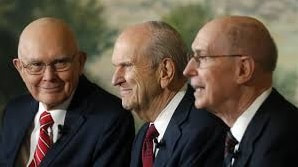 I am sure, however, the Lord’s timing is spot on. As I watched the presentations of the new First Presidency during the gathering in the Salt Lake temple annex as well as the press conference, I felt the sweet, gentle confirmation of the Spirit that Russell M. Nelson, Dallin H. Oaks, and Henry B. Eyring are the men the Lord wants to fill these roles at this time. I confess I was half expecting President Nelson to call the same counselors who served under President Monson. But surprised doesn’t mean disappointed. President Oakes and President Eyring are each well-seasoned servants who have more than adequate preparation for their new callings. And I look forward to having a more energetic Prophet in President Nelson. Can you believe he’s 93 and still goes skiing? Whether or not you believe that, certainly President Nelson hasn’t sought his new role. While watching him speak both in the Salt Lake Temple annex and the press conference, President Nelson humbly repeated over and over that this is the Lord’s Church and He is at the head guiding and directing its affairs. President Nelson also encouraged Church members to stay on the covenant path, which may turn out to be the theme for his tenure as the Prophet. Whether or not that holds true, we’ll always be blessed when we follow the Brethren. And that will bring more joy in our journey.
|
Author
Howdy! I'm Lance, host of Joy in the Journey Radio. I've been blogging about LDS singles life since 2012, and since 2018 I've been producing a weekly Internet radio show and podcast to help LDS singles have more joy in their journey and bring all Latter-day Saints together. Let's engage a conversation that will increase the faith of LDS singles and bring singles and marrieds together in a true unity of the faith.
Comment
Joy in the Journey Radio encourages the free discussion of ideas but reserves the right to remove and/or block comments which do not conform to LDS standards.
Donate
Joy in the Journey Radio offers many free resources to help LDS singles everywhere, but it certainly isn't free! Help Joy in the Journey Radio in its mission to improve the lives of LDS singles by donating today.
Posts by Month
December 2022
Categories
All
|
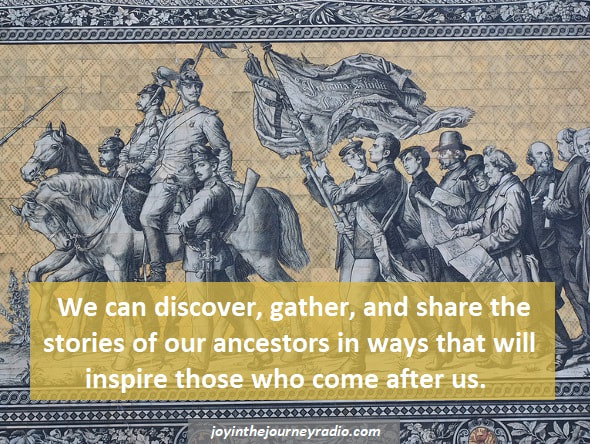
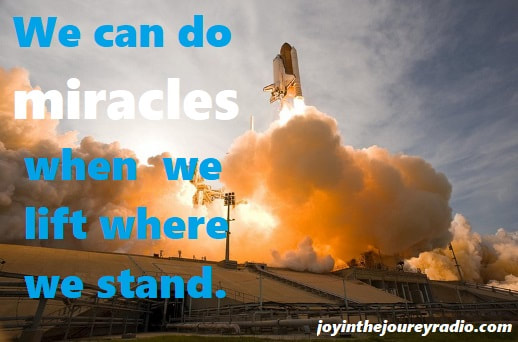
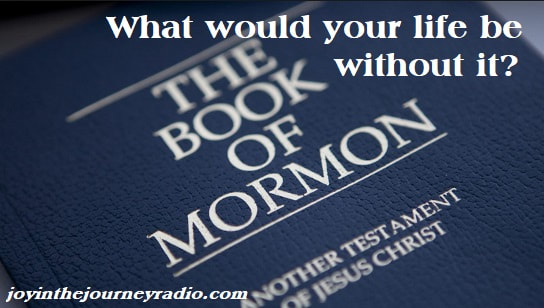
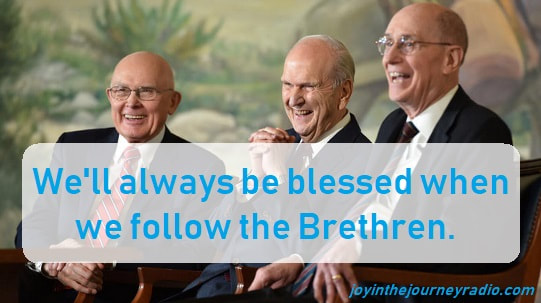
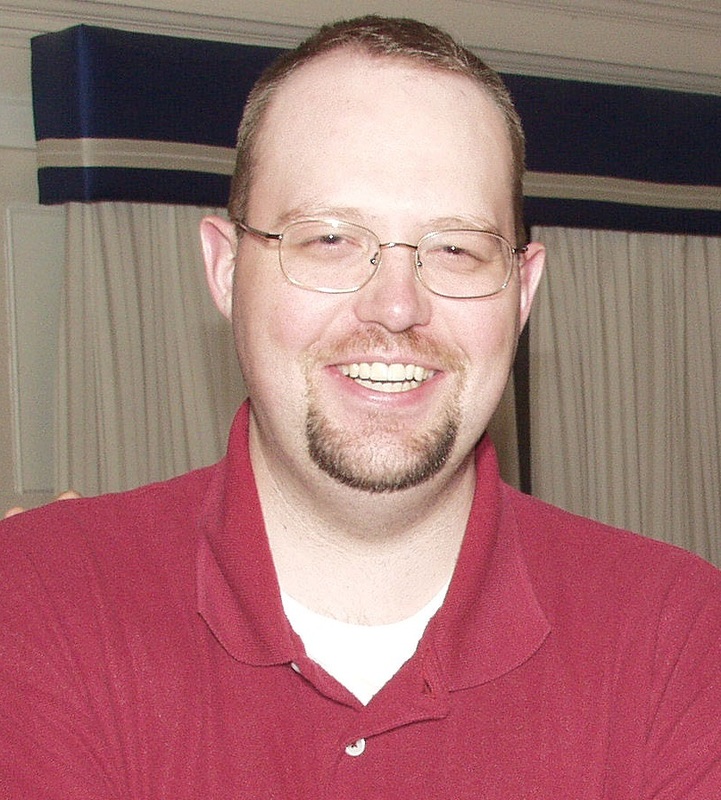
 RSS Feed
RSS Feed